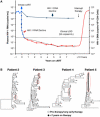What Integration Sites Tell Us about HIV Persistence
- PMID: 27173927
- PMCID: PMC4900157
- DOI: 10.1016/j.chom.2016.04.010
What Integration Sites Tell Us about HIV Persistence
Abstract
Advances in technology have made it possible to analyze integration sites in cells from HIV-infected patients. A significant fraction of infected cells in patients on long-term therapy are clonally expanded; in some cases the integrated viral DNA contributes to the clonal expansion of the infected cells. Although the large majority (>95%) of the HIV proviruses in treated patients are defective, expanded clones can carry replication-competent proviruses, and cells from these clones can release infectious virus. As discussed in this Perspective, it is likely that cells that produce virus are strongly selected against in vivo, and cells with replication competent proviruses expand and survive because only a small fraction of the cells produce virus. These findings have implications for strategies that are intended to eliminate the reservoir of infected cells that has made it almost impossible to cure HIV-infected patients.
Published by Elsevier Inc.
Figures




References
-
- Bailey JR, Sedaghat AR, Kieffer T, Brennan T, Lee PK, Wind-Rotolo M, Haggerty CM, Kamireddi AR, Liu Y, Lee J, et al. Residual human immunodeficiency virus type 1 viremia in some patients on antiretroviral therapy is dominated by a small number of invariant clones rarely found in circulating CD4+ T cells. Journal of virology. 2006;80:6441–6457. - PMC - PubMed
Publication types
MeSH terms
Grants and funding
LinkOut - more resources
Full Text Sources
Other Literature Sources
Medical
Research Materials

